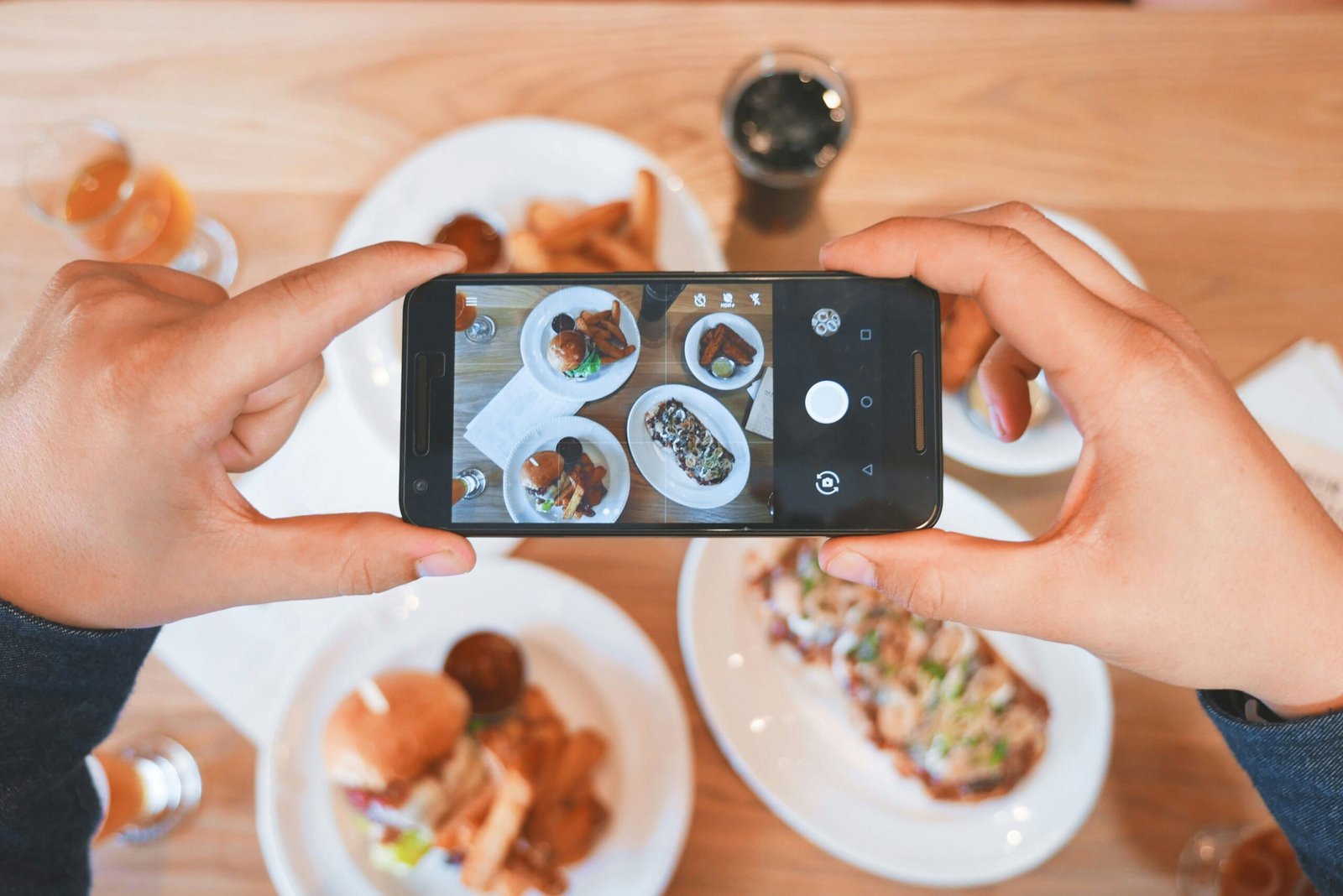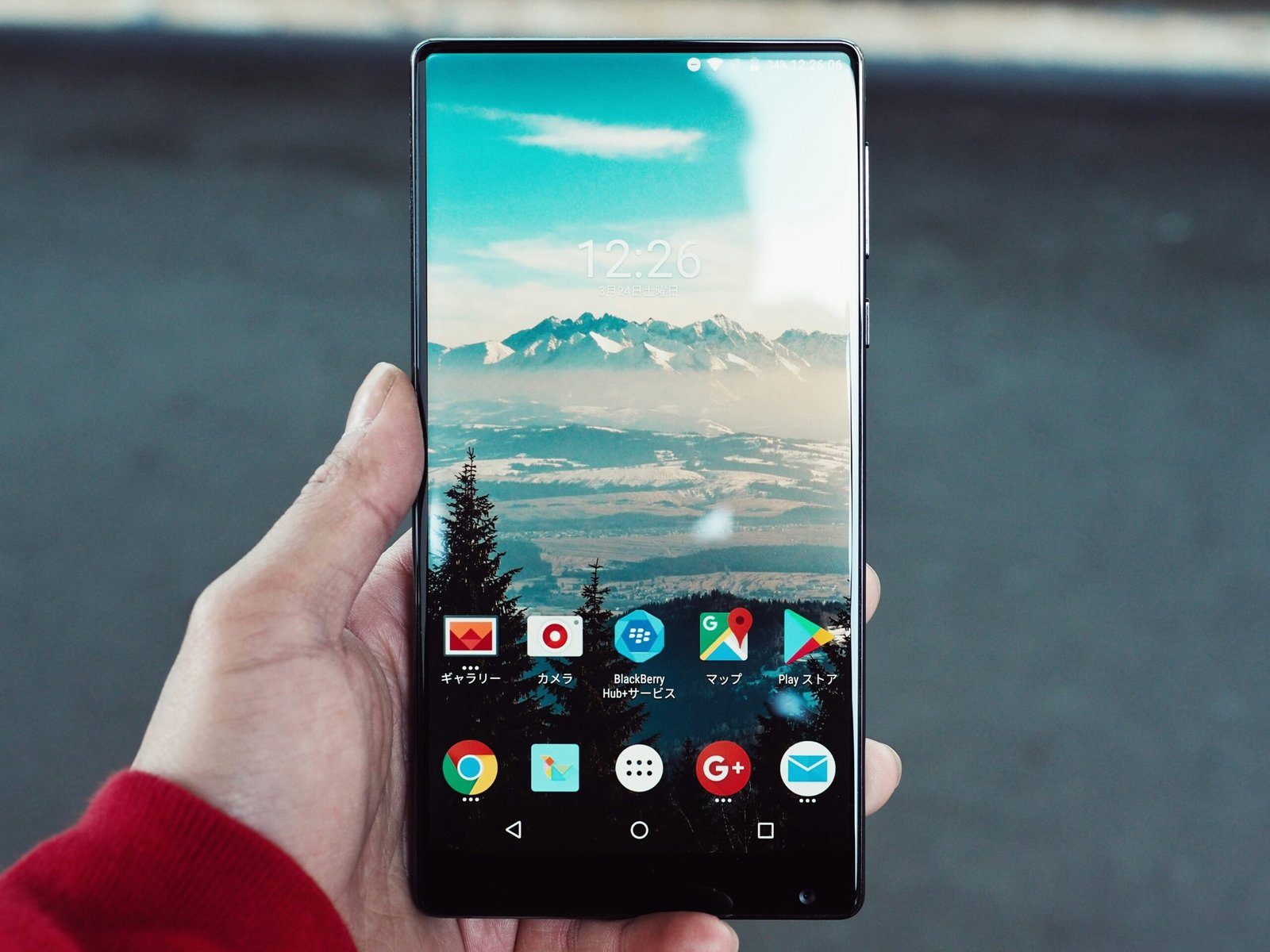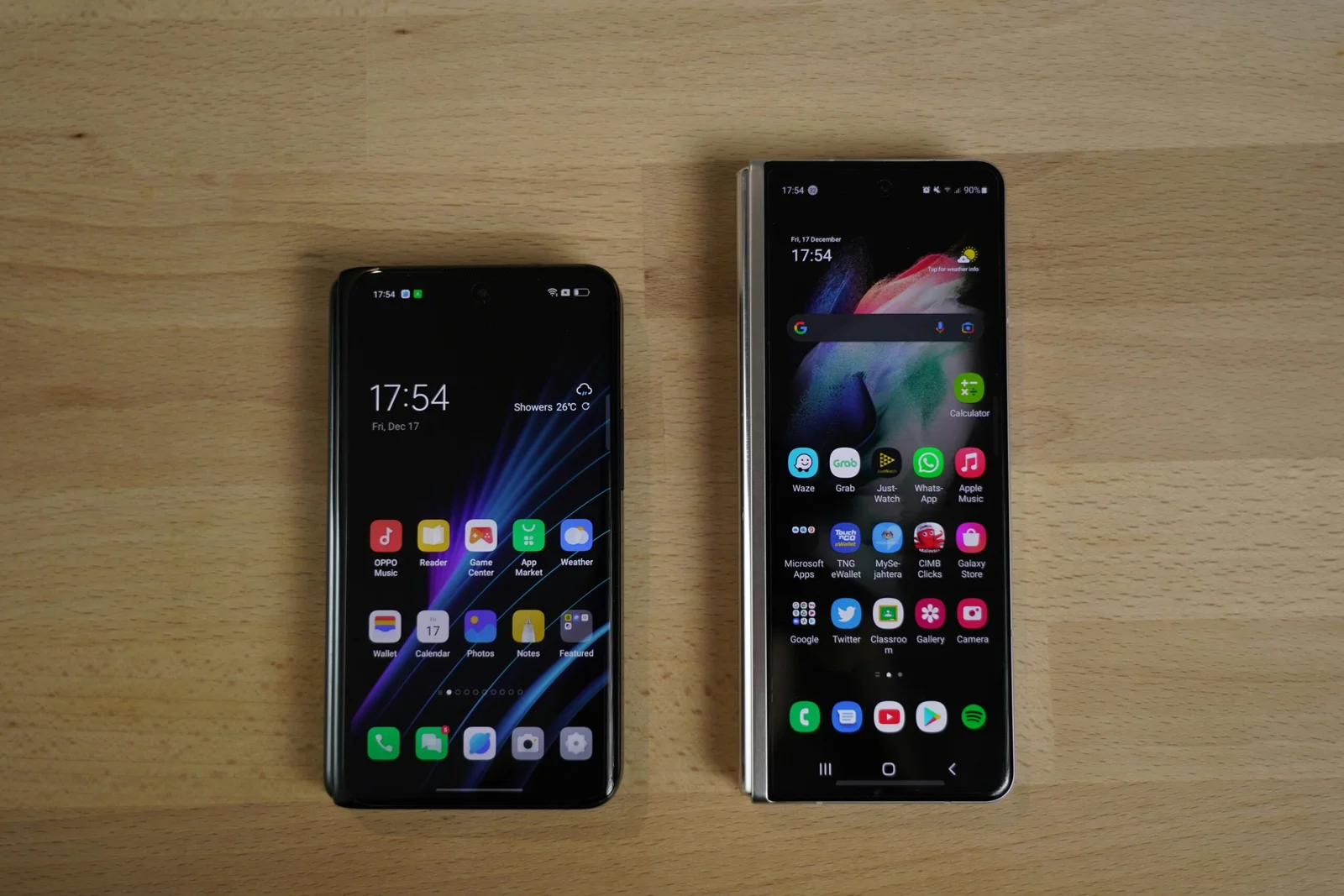
Introduction to 2024’s Smartphone Camera Innovations
The year 2024 marks a significant leap in smartphone camera technology, with numerous advancements setting a new benchmark in mobile photography. As smartphones continue to be the primary device for capturing life’s moments, manufacturers have focused on integrating cutting-edge innovations to enhance image quality and user experience.
One of the most notable trends in 2024 is the rise of computational photography. This technique leverages powerful algorithms and machine learning to process images in ways that were previously unimaginable. By combining multiple shots into a single, high-quality photo, smartphones can now produce images with greater detail, dynamic range, and color accuracy than ever before.
AI enhancements also play a crucial role in this year’s smartphone cameras. From intelligent scene recognition to real-time adjustments, AI-powered cameras can automatically optimize settings based on the subject and environment. This means users can capture stunning photos with minimal effort, regardless of their photography skills.
Sensor improvements are another key development in 2024. Larger and more sensitive sensors allow for better performance in low-light conditions, reducing noise and enhancing clarity. These sensors, paired with advanced optics, deliver impressive results even in challenging lighting scenarios, making nighttime photography more accessible and enjoyable for users.
Optical innovations have also seen substantial progress. Enhanced lens designs and stabilization technologies ensure that images are sharp and free from blurriness, even when taken on the move. Optical zoom capabilities have been extended, allowing for closer shots without compromising image quality. These advancements collectively elevate the standard of smartphone photography, making it possible to achieve professional-level results with a device that fits in your pocket.
The importance of these advancements cannot be overstated. They not only improve the quality of everyday photography but also empower users to capture moments with greater creativity and precision. As we delve deeper into the specifics of the best smartphone cameras of 2024, it’s clear that these innovations are reshaping the landscape of mobile photography, offering unparalleled experiences to users worldwide.
Top Flagship Smartphone Cameras
The year 2024 has seen remarkable advancements in smartphone camera technology, with flagship models from leading brands setting new benchmarks in mobile photography. Among the most notable are the Apple iPhone 15 Pro Max, Samsung Galaxy S24 Ultra, Google Pixel 9 Pro, and Huawei P60 Pro. These devices not only offer exceptional camera capabilities but also integrate cutting-edge features that enhance the overall user experience.
The Apple iPhone 15 Pro Max continues to impress with its triple-camera system, featuring a 48 MP main sensor, a 12 MP ultra-wide lens, and a 12 MP telephoto lens with 5x optical zoom. The innovative LiDAR scanner enhances low-light photography and augmented reality applications, making this device a top choice for photography enthusiasts.
Samsung’s Galaxy S24 Ultra stands out with its quad-camera setup, headlined by an impressive 200 MP main sensor. The device also includes a 12 MP ultra-wide lens, a 10 MP periscope telephoto lens with 10x optical zoom, and a 10 MP telephoto lens with 3x optical zoom. Samsung’s advanced AI-driven image processing ensures stunning clarity and detail in every shot.
Google’s Pixel 9 Pro is renowned for its computational photography capabilities, leveraging a 50 MP main sensor and a 12 MP ultra-wide lens. Google’s AI algorithms excel in optimizing photos for various lighting conditions, producing vibrant, true-to-life images. The Pixel 9 Pro’s software-driven Super Res Zoom offers up to 30x digital zoom, maintaining impressive image quality.
The Huawei P60 Pro boasts a versatile quad-camera system, featuring a 50 MP main sensor, a 40 MP ultra-wide lens, a 12 MP periscope telephoto lens with 5x optical zoom, and a 3D depth sensor. Huawei’s proprietary RYYB sensor technology enhances light capture, resulting in excellent low-light performance and vivid colors.
Each of these flagship smartphones offers unique strengths, catering to different photography needs and preferences. Whether it’s the iPhone 15 Pro Max’s seamless integration with Apple’s ecosystem, the Galaxy S24 Ultra’s unparalleled zoom capabilities, the Pixel 9 Pro’s superior computational photography, or the Huawei P60 Pro’s exceptional low-light performance, 2024’s top flagship smartphones have set a high bar for mobile photography excellence.
Best Mid-Range Smartphone Cameras
In 2024, the mid-range smartphone market has seen substantial advancements, particularly in camera technology. Consumers can now find devices that offer exceptional camera performance without the premium price tag. Notable brands such as OnePlus, Xiaomi, and Motorola have stepped up their game, delivering smartphones that cater to photography enthusiasts on a budget.
OnePlus’ latest offering, the OnePlus Nord 3, stands out due to its impressive camera setup. It features a 50MP main sensor that captures vibrant and detailed images even in low-light conditions. The integration of advanced software enhancements, such as AI scene detection and improved night mode, further elevates the photography experience. Additionally, the Nord 3 includes a versatile ultra-wide and macro lens, providing users with a comprehensive photography toolkit.
Xiaomi’s Redmi Note 13 Pro is another strong contender in the mid-range segment. The phone boasts a 108MP primary camera sensor, which is remarkable for its price range. This high-resolution sensor is complemented by advanced image processing algorithms, ensuring sharp and well-balanced photos. The Redmi Note 13 Pro also excels in video recording, offering 4K resolution and various cinematic modes that allow users to capture professional-quality videos.
Motorola’s Moto G100 also deserves mention for its robust camera capabilities. The device features a 64MP main sensor paired with a dual-lens system that includes an ultra-wide and depth sensor. Motorola has incorporated AI-driven software enhancements that optimize photo quality, making it easier for users to capture stunning images with minimal effort. The Moto G100 also offers a suite of manual controls for those who prefer a hands-on approach to photography.
When comparing these models, it becomes evident that each brand brings its unique strengths to the table. OnePlus excels in software enhancements, Xiaomi offers unparalleled sensor quality, and Motorola provides a balanced combination of hardware and software. These mid-range smartphones demonstrate that you don’t need to spend a fortune to enjoy high-quality photography, making them excellent choices for budget-conscious consumers.
“`html
Innovative Camera Features to Look Out For
As we move into 2024, smartphone cameras continue to push the boundaries of what’s possible, integrating cutting-edge technology and innovative features that redefine mobile photography. One of the most significant advancements is the introduction of periscope zoom lenses. These lenses allow for higher optical zoom levels without increasing the phone’s thickness, delivering crisp and clear images even at long distances. This technology has been a game-changer for those who enjoy capturing distant subjects with precision.
Another remarkable innovation is the multi-camera setup. Many flagship smartphones now come equipped with multiple lenses, each serving a specific purpose – from ultra-wide-angle shots to telephoto zooms and macro photography. This versatility enables users to take a wide variety of photos without needing additional equipment, making it easier than ever to capture professional-quality images.
Advanced night mode capabilities have also seen significant improvements. New algorithms and sensor technologies work together to enhance low-light photography, reducing noise and increasing detail in dark environments. This feature is particularly beneficial for night owls and those who enjoy capturing the beauty of cityscapes or starry skies, making night-time photography more accessible and impressive.
Real-time HDR (High Dynamic Range) is another standout feature that has been refined in 2024’s smartphone cameras. By processing multiple exposures in real time, this technology ensures that photos have balanced lighting and rich detail, even in challenging conditions with high contrast. This means that whether you’re shooting in bright sunlight or a dimly lit room, your photos will exhibit a perfect blend of shadows and highlights.
These innovative camera features not only elevate the photography experience but also set certain smartphones apart from the competition. As manufacturers strive to outdo one another, consumers benefit from an array of advanced tools that make capturing stunning images simpler and more enjoyable than ever before.
AI and Computational Photography
In recent years, artificial intelligence (AI) and computational photography have revolutionized the capabilities of smartphone cameras. These technologies work in tandem to enhance image quality, making it possible for users to capture stunning photos with minimal effort. In 2024, AI-driven features have become essential components of leading smartphone cameras, offering unparalleled scene recognition, sophisticated image processing, and automatic photo enhancements.
AI scene recognition is a game-changer, allowing smartphones to identify different elements within a frame, such as landscapes, portraits, or low-light environments. This intelligent analysis enables the camera to automatically adjust its settings to capture the optimal shot. For instance, the latest smartphones from brands like Apple and Samsung use AI to distinguish between a sunset and a cityscape, applying the appropriate adjustments to exposure, contrast, and color balance.
Image processing has also seen significant improvements thanks to computational photography. Techniques such as multi-frame processing, where multiple images are captured in quick succession and then combined, reduce noise and increase detail. AI algorithms further refine these images by enhancing textures and correcting distortions, resulting in photos that are sharper and more vibrant. The Google Pixel series, for example, leverages computational photography to deliver exceptional clarity and dynamic range, even in challenging lighting conditions.
Moreover, AI-powered features like portrait mode and night mode have become indispensable. Portrait mode uses depth-sensing technology and AI to create a bokeh effect, blurring the background while keeping the subject in sharp focus. Night mode, on the other hand, employs AI to brighten images taken in low light, preserving detail and minimizing grain. The integration of AI in these modes has set a new standard for smartphone photography, ensuring that users can capture professional-quality images regardless of the situation.
Overall, the advancements in AI and computational photography have significantly enhanced the user experience. Smartphones in 2024 are equipped with cutting-edge technology that simplifies the process of taking high-quality photos, making it accessible to everyone, from amateur photographers to seasoned professionals.
User Experience and Camera Software
In the realm of smartphone photography, user experience and camera software play pivotal roles in determining the overall quality of captured images. The ease of use and intuitive interface design significantly influence a user’s ability to harness the full potential of the smartphone camera. In 2024, leading smartphone brands have focused on refining these aspects to offer superior photography experiences to their users.
One of the primary factors contributing to an excellent user experience is the camera app’s interface. A well-designed interface allows users to navigate through various settings and features effortlessly. For instance, brands like Apple and Samsung have prioritized clean, user-friendly layouts that enable quick access to essential functions like zoom, focus, and exposure adjustments. This streamlined approach ensures that even novice users can capture high-quality photos with minimal effort.
In addition to interface design, the integration of advanced software features has become a hallmark of top-tier smartphone cameras. Editing tools and filters are now embedded directly within camera apps, allowing users to enhance their photos without resorting to third-party applications. For example, Google’s Pixel series and Huawei’s flagship devices offer robust editing suites that include tools for cropping, color correction, and applying artistic filters. These features empower users to fine-tune their images, making post-processing a seamless part of the photography experience.
Furthermore, artificial intelligence (AI) and machine learning (ML) have revolutionized camera software, enhancing the overall user experience. Brands like Xiaomi and OnePlus have harnessed AI to provide features such as scene recognition, which automatically adjusts camera settings based on the subject being photographed. This technology ensures optimal image quality in various shooting conditions, from low-light environments to fast-moving scenes.
In conclusion, the importance of user experience and camera software in smartphone photography cannot be overstated. Leading brands have made significant strides in this area, offering intuitive interfaces, comprehensive editing tools, and cutting-edge AI capabilities. These advancements ensure that users can capture and refine stunning images with ease, solidifying the smartphone’s role as a powerful tool for photography in 2024.
Camera Performance in Different Scenarios
When evaluating the best smartphone cameras of 2024, it’s essential to consider their performance across different scenarios, such as low light, portrait mode, landscape photography, and video recording. Understanding these aspects will help users maximize their photography experience and capture stunning images and videos.
In low light conditions, smartphone cameras with larger sensors and advanced night modes significantly outperform those with standard configurations. For example, the Google Pixel 8 Pro excels in low light scenarios, thanks to its enhanced computational photography algorithms. The iPhone 15 Pro Max also demonstrates impressive low light capabilities with its LiDAR scanner, which improves focus and detail in dim settings. Users aiming to capture better low light shots should ensure their camera settings are optimized for night mode and consider using a tripod to minimize shake.
Portrait mode has become a staple feature in modern smartphones, allowing for professional-looking photos with a blurred background effect. The Samsung Galaxy S24 Ultra is noteworthy in this regard, as it delivers precise edge detection and natural bokeh effects, even in complex backgrounds. Similarly, the OnePlus 11 Pro offers a refined portrait mode with adjustable aperture settings. For the best portrait results, users should ensure good lighting conditions and maintain an adequate distance from the subject.
Landscape photography benefits from wide-angle lenses and advanced HDR capabilities. The Xiaomi Mi 13 Pro, with its ultra-wide lens and superior dynamic range, captures breathtaking landscapes with minimal distortion and vibrant colors. The Sony Xperia 1 V also stands out, offering exceptional detail and clarity in outdoor scenarios. To enhance landscape shots, users should experiment with different angles and compositions, and take advantage of the smartphone’s HDR settings.
Video recording quality is another critical aspect where top smartphones shine. The iPhone 15 Pro Max leads the pack with its ability to record in Dolby Vision HDR, providing unparalleled color accuracy and dynamic range. The Samsung Galaxy S24 Ultra also offers impressive video performance, with 8K recording capabilities and advanced stabilization features. To achieve the best video results, users should utilize the phone’s stabilization features, shoot in well-lit environments, and explore various frame rates and resolutions.
By understanding how top smartphone cameras perform in different scenarios, users can make informed decisions and adopt best practices to enhance their photography and videography experiences. Whether it’s capturing a stunning night scene, a beautiful portrait, a vast landscape, or a captivating video, the right smartphone camera can make all the difference.
Future Trends in Smartphone Camera Technology
As we look ahead, the evolution of smartphone camera technology promises to bring transformative advancements that could redefine our interaction with photography. One of the most anticipated trends is the integration of 3D imaging capabilities. By capturing depth information alongside traditional 2D images, future smartphones could enable more immersive and realistic photos. This could not only enhance personal photography but also enable more sophisticated augmented reality (AR) applications, ranging from gaming to virtual interior design.
Another significant trend is the deepening fusion of augmented reality with smartphone cameras. AR integration can revolutionize how we perceive and interact with our surroundings. Imagine using your smartphone camera to identify landmarks, translate foreign text in real-time, or even try on clothes virtually. These capabilities are likely to become more seamless and intuitive as AR technology continues to advance.
Artificial intelligence (AI) will also play a pivotal role in the future of smartphone cameras. Enhanced AI algorithms can significantly improve image processing, offering better noise reduction, dynamic range, and color accuracy. AI-driven features like scene recognition and automated adjustments are expected to become more sophisticated, allowing users to capture professional-grade photos effortlessly. Furthermore, AI could assist in post-processing, enabling more advanced editing options directly on the device.
Additionally, we can anticipate improvements in sensor technology and optical zoom capabilities. Larger sensors and advanced lens systems will likely provide superior image quality, even in challenging lighting conditions. The miniaturization of periscope lenses could bring high-quality optical zoom to more compact devices, eliminating the need for bulky camera modules.
In conclusion, the future of smartphone camera technology is poised to bring exciting innovations that will enhance both the functionality and the user experience. With advancements in 3D imaging, augmented reality, AI, and sensor technology, the smartphones of tomorrow will not only capture moments but also transform how we see and interact with the world around us.






